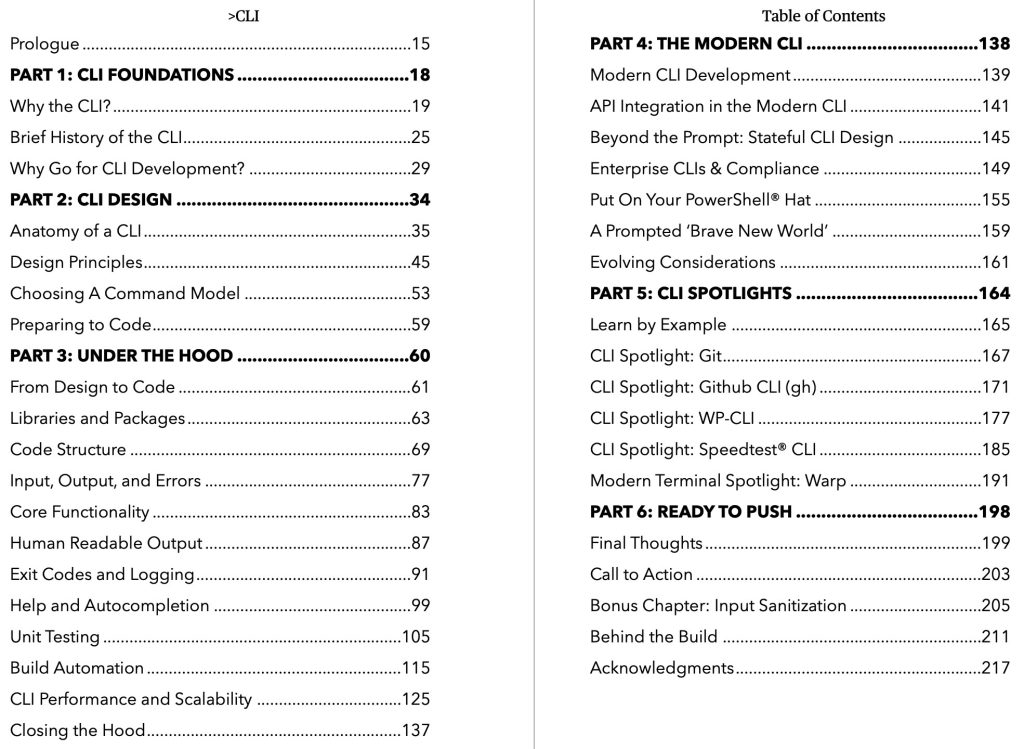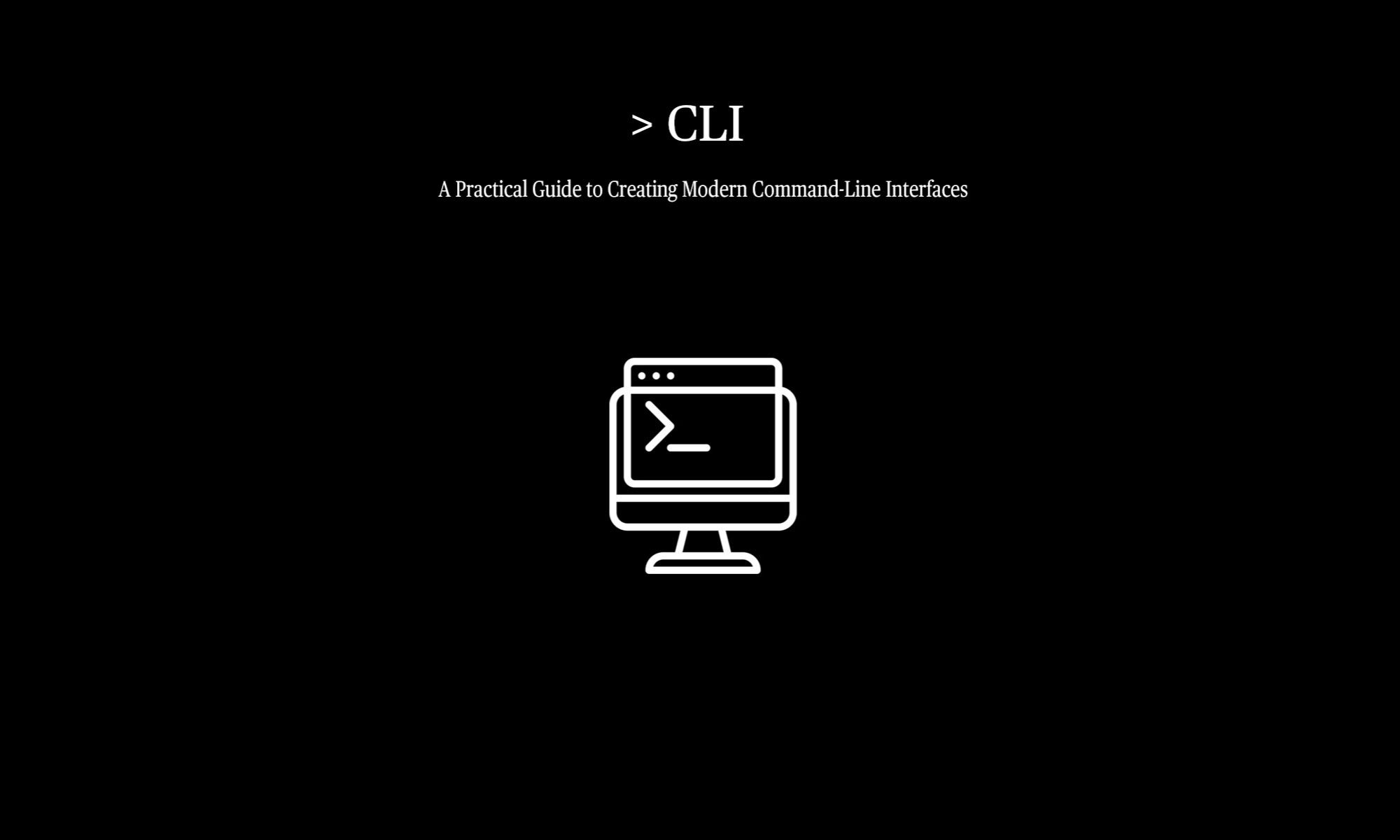>CLI: A Practical Guide to Creating Modern Command-Line Interfaces
Is a six-part, 200-page guide to designing and building command-line tools that are modern, maintainable, and production-ready. While the concepts apply across languages, all examples are written in Go for clarity and relevance.
Below is a brief summary of each section, followed by the full table of contents:
Part 1 – CLI Foundations
This opening section explores the command-line interface’s evolving role in modern computing. It begins with real-world use cases, then walks through a brief history of the CLI—its rise, decline during the GUI era, and its resurgence in today’s cloud-native landscape. The section closes with a discussion of programming language options for CLI development, including why Go was chosen for the book’s examples. As highlighted later in Part 5 – CLI Spotlights, Go is not the only viable choice for modern CLI development.
Part 2 – CLI Design
Well-designed software is no accident. This section focuses on the architecture and intentionality behind effective command-line tools. It begins by breaking down the anatomy of a CLI, then introduces key design principles that guide usability, maintainability, and functionality. It also provides a practical overview of command models—traditional, single-purpose, and object-based. In Part 5 – CLI Spotlights, these foundational ideas come full circle as we examine how iconic CLIs have applied these very principles and models to achieve enduring success.
Part 3 – Under the Hood
This section dives into the mechanics of CLI development through example-led discussions. While the concepts remain high-level and language-agnostic, each chapter includes practical, working programs—all freely available on this website. Topics such as input/output, logging, configuration, testing, and performance are explored with clarity and intention. Each chapter concludes with a set of Prompting Tips designed to help developers leverage AI coding copilots more effectively throughout the development process.
Part 4 – The Modern CLI
The command-line interface is nearing its 60th anniversary—dating back to the mid-1960s with early systems like CTSS and Unix’s shell successors. Rooted in enduring concepts such as the Unix Philosophy, the CLI has stood the test of time. However, the modern software era brings new challenges and opportunities: cloud-native architectures, API-driven ecosystems, SaaS platforms, evolving approaches to state management, and increasing demands for security, privacy, and regulatory compliance.
This section doesn’t aim to deliver definitive answers, but rather to surface important considerations for today’s CLI developer. Well-designed CLIs that thoughtfully address these dimensions will continue to remain relevant—potentially for another 60 years. Topics include cross-environment compatibility, playing well with PowerShell®, and the emerging impact of AI-augmented shell environments. The section concludes with a forward-looking chapter on building CLIs in an age of generative AI.
Part 5 – CLI Spotlights
Linus Torvalds reignited interest in the command-line interface with the introduction of Linux in the 1990s, but it was his creation of Git that fundamentally reshaped the CLI landscape. CLI Spotlights examines a select group of influential and well-designed command-line tools to demonstrate how the principles, design models, and modern considerations discussed in Parts 2 through 4 are applied in real-world software.
Each spotlight explores a different dimension of effective CLI design—from modular command structures and operational readiness to extensibility and user experience. The section concludes with a forward-looking Shell Spotlight, examining the future of terminal interaction and how tools like Warp are reimagining the CLI experience in an AI-enabled world.
Part 6 – Ready to PUSH
Ready to PUSH brings >CLI to a close with final thoughts, a challenge to the reader, and a behind-the-scenes look at how the book came together. This final section includes practical takeaways, a bonus chapter on input sanitization, and a transparent view into the tools, technologies, and moments that shaped the project—from handwritten notes to AI-assisted code examples. It’s both a wrap-up and a nudge forward—encouraging readers to build, refine, and contribute their own modern CLIs to the world.
Table of Contents

Publication Details
Title: >CLI
Subtitle: A Practical Guide to Creating
Modern Command-Line Interfaces
Author: Derick Schaefer
Publisher: OC2 Ventures Publishing
Publication Date: 11/1/2025
ISBN: 979-8-9926082-3-6 (paperback)
ISBN: 979-8-9926082-4-3 (hardcover)
ISBN: 979-8-9926082-9-8 (Contributor’s Edition)
Library of Congress LCCN: 2025940708
